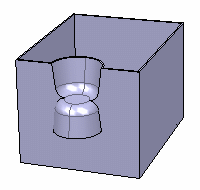Click Rest
 in
the Functional Features toolbar.
in
the Functional Features toolbar.
The Rest dialog box appears.
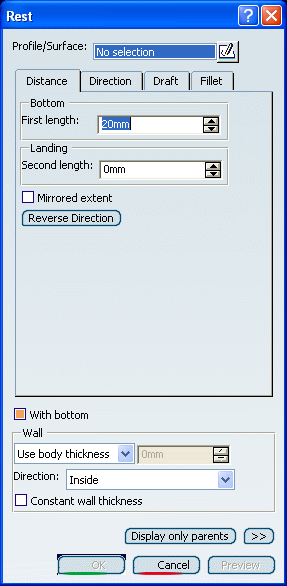
Select a closed profile.
A rest requires a closed profile on the body indicating where the rest
is to be created.
Enter 8mm in the First length box to define
the distance from the sketch plane up to the bottom.
To define the landing, enter 10mm in the Second
length box to define the distance from the sketch plane up to
the landing. Previewing the feature lets you get an idea of what the
rest looks like. As a protected area, it is displayed in red:
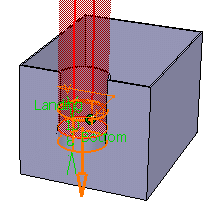
Select Mirrored extent to extrude the profile
in the opposite direction using the same length value as the one defined
for the first length.
Click Reverse Direction to reverse the extrusion
direction. Another way of reversing the direction is by clicking the
arrow in the geometry area.
By default, the Normal to profile option
is checked, meaning that the profile is extruded normal to the sketch
plane. If you wish to specify another direction, just uncheck the option,
and then select a geometrical element to be used as the new reference.
For the purposes of our scenario, keep the default option.
Select the Draft tab to define a draft angle.
In the Draft behaviour list, select Intrinsic to
feature.
Enter the desired value in the Angle box.
The default neutral element (defines a neutral
curve on which the drafted face will lie) is the Profile
plane. The other possible neutral elements can be:
- Bottom
- Landing
- Plane/Surface
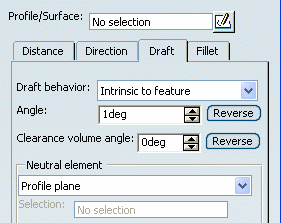
A Clearance volume angle
box and associated Reverse button allows the clearance draft
to be independent of the platform draft. This allows, for example, the
platform draft to be used for aesthetic reasons (large draft value)
and the clearance draft to be used for manufacturability (small draft
value).
Enter 7deg in the Angle box and 8deg in the
Clearance volume angle box.
Click Reverse button at Angle.
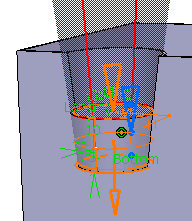
Click the Fillet tab.
Selecting Lateral radius check box enables you to fillet
lateral edges. Then, you merely need to set the radius value of your
choice. Select the Bottom radius check box to fillet
bottom edges.
Select the Landing radius check box to fillet
landing edges and enter 6mm as the radius value.
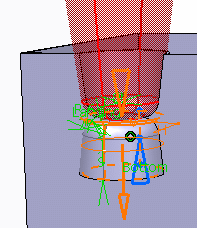
If the rest is to be shelled, you can select Constant
wall thickness check box. This propagates the fillets into the
shell, thus maintaining a constant wall thickness.
To define the wall, you can set one of the two options
available from the Type drop down list:
-
Use body thickness: the rest
wall thickness is that of the active shelled body thickness.
-
Enter thickness: simply enter
the value you want. After this option is selected, the value
box becomes available. Wall thickness values can only by
positive values.
You can
control whether the wall is constructed inside or outside of
the selected profile. The default is an inside wall thickness.
Click OK to confirm and create the rest.
The rest is created. The protected area is hidden.
Rest.X is added to the specification tree in the
Solid Functional Set.X node.
